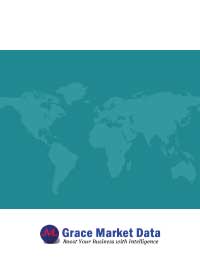Europe residential air purifiers market accounted for $692.5 million in 2019 and will grow by 5.6% annually over 2020-2030 owing to the surging need for clean air in living environment amid COVID-19 pandemic.
Highlighted with 33 tables and 36 figures, this 97-page report “Europe Residential Air Purifiers Market 2020-2030 by Technology (HEPA, ESP), Product Type (Stand-alone, In-duct), Distribution Channel, and Country: Trend Forecast and Growth Opportunity” is based on a comprehensive research of the entire Europe residential air purifiers market and all its sub-segments through extensively detailed classifications. Profound analysis and assessment are generated from premium primary and secondary information sources with inputs derived from industry professionals across the value chain. The report is based on studies on 2015-2019 and provides forecast from 2020 till 2030 with 2019 as the base year. (Please note: The report will be updated before delivery so that the latest historical year is the base year and the forecast covers at least 5 years over the base year.)
In-depth qualitative analyses include identification and investigation of the following aspects:
- Market Structure
- Growth Drivers
- Restraints and Challenges
- Emerging Product Trends & Market Opportunities
- Porter’s Fiver Forces
The trend and outlook of Europe market is forecast in optimistic, balanced, and conservative view by taking into account of COVID-19. The balanced (most likely) projection is used to quantify Europe residential air purifiers market in every aspect of the classification from perspectives of Technology, Product Type, Distribution Channel, End User, and Country.
Based on Technology, the Europe market is segmented into the following sub-markets with annual revenue ($ mn) for 2019-2030 included in each section.
- High-efficiency Particulate Air (HEPA)
- Electrostatic Precipitators (ESPs)
- Ionizers
- Activated Carbon
- Other Technologies
Based on Product Type, the Europe market is segmented into the following sub-markets with annual revenue ($ mn) for 2019-2030 included in each section.
- Stand-alone Residential Air Purifiers
- In-duct Residential Air Purifiers
Based on Distribution Channel, the Europe market is segmented into the following sub-markets with annual revenue ($ mn) for 2019-2030 included in each section.
- Offline Sales
- Online Sales
Geographically, the following national/local markets are fully investigated:
- Germany
- UK
- France
- Spain
- Italy
- Russia
- Rest of Europe (further segmented into Netherlands, Switzerland, Turkey, Poland, Sweden, Belgium, Austria, Ireland, Norway, Denmark, and Finland)
For each key country, detailed analysis and data for annual revenue ($ mn) are available for 2019-2030. The breakdown of key national markets by Technology, Product Type, and Distribution Channel over the forecast years are also included.
The report also covers current competitive scenario and the predicted trend; and profiles key vendors including market leaders and important emerging players.
Specifically, potential risks associated with investing in Europe residential air purifiers market are assayed quantitatively and qualitatively through GMD’s Risk Assessment System. According to the risk analysis and evaluation, Critical Success Factors (CSFs) are generated as a guidance to help investors & stockholders identify emerging opportunities, manage and minimize the risks, develop appropriate business models, and make wise strategies and decisions.
Key Players (this may not be a complete list and extra companies can be added upon request):
- 3M Co.
- AllerAir Industries, Inc.
- Daikin Industries, Ltd.
- Dyson Ltd
- Honeywell International Inc.
- IQAir
- Koninklijke Philips NV
- LG Electronics Inc.
- Panasonic Corporation
- Samsung Electronics Co. Ltd.
- Sharp Corporation
- Unilever PLC (BlueAir AB)
- Whirlpool Corporation
- WINIX Inc.
- Xiaomi Corp.
(Please note: The report will be updated before delivery so that the latest historical year is the base year and the forecast covers at least 5 years over the base year.)



